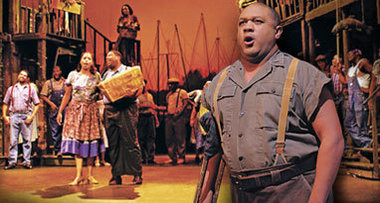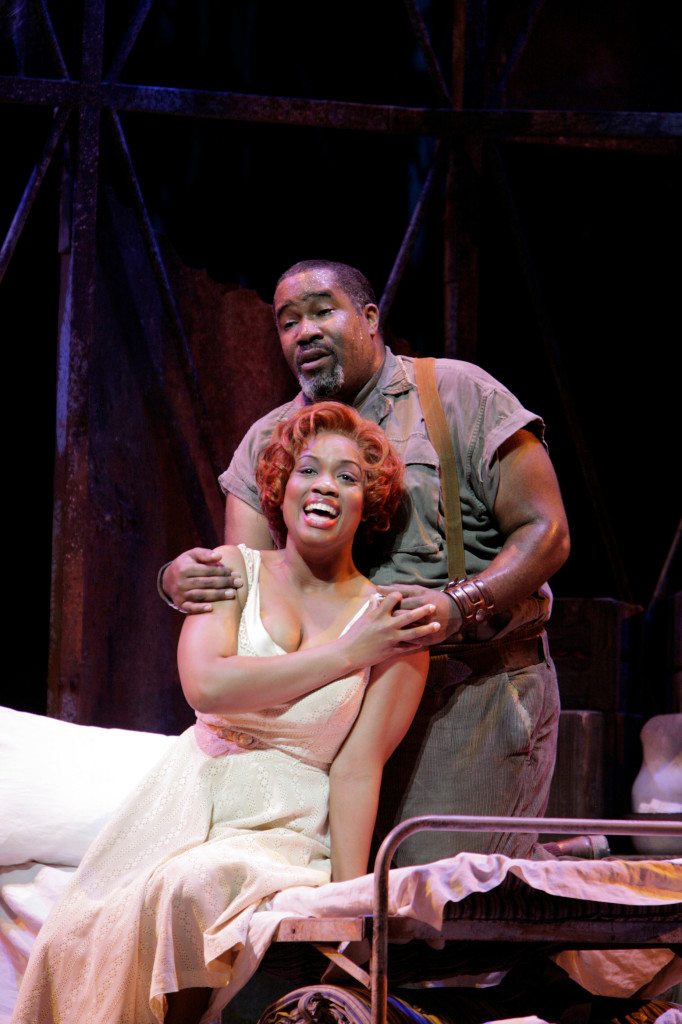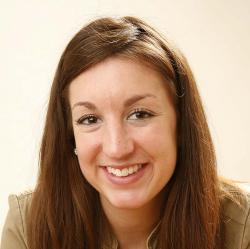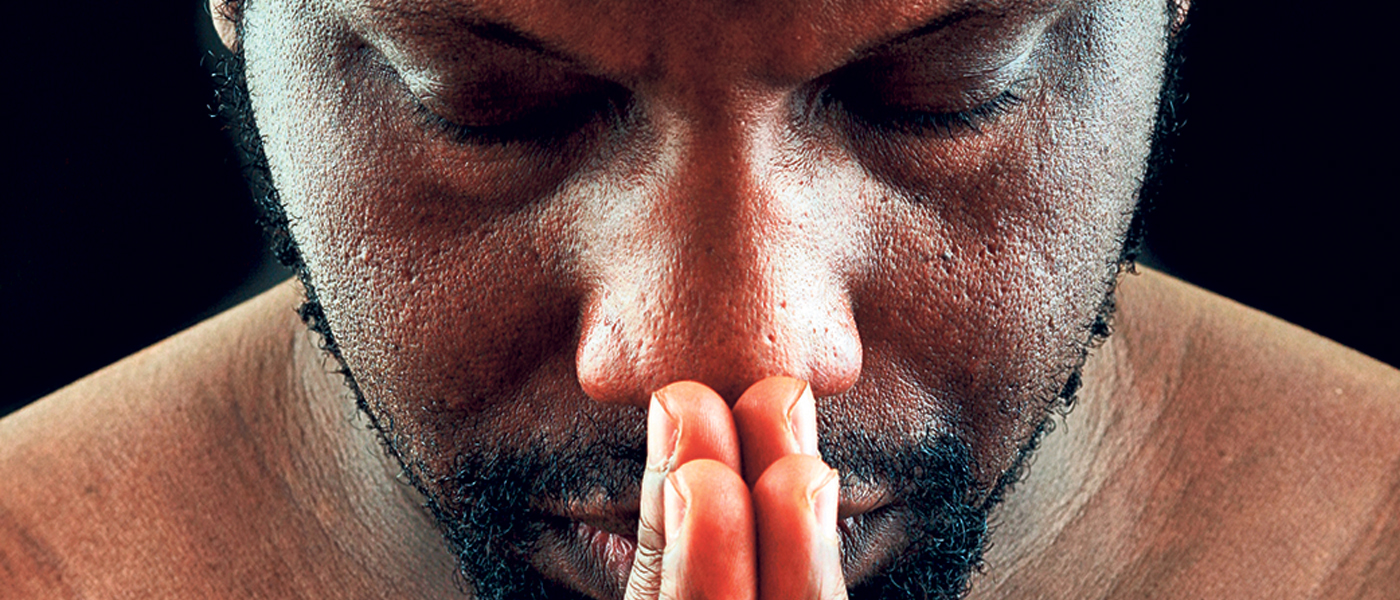First premiered in 1935, it took until 1976 for Porgy and Bess to be largely accepted as a legitimate opera, when the Houston Grand Opera mounted a critically acclaimed production. And it wasn’t until nine years later that New York City’s Metropolitan Opera first performed the work. Fast-forward to 2014, and the piece is still one of the most popular, well known and powerful in opera.
Syracuse Opera will present Porgy and Bess, featuring music by George Gershwin, libretto by DuBose Heyward and lyrics by Heyward and Ira Gershwin, Sunday, April 6, at 2 p.m. in the Mulroy Civic Center’s Crouse-Hinds Concert Theater. It will conclude the 2013-2014 season.
“When I think about the piece, I think about the storyline as well as the music Gershwin so beautifully put together,” says Laquita Mitchell, who will perform as Bess. “When you think about the piece as a whole, structurally, how many other operas can you name that have so many classic hits? And orchestrally speaking, it has jazz, folk, spirituals all within the piece. It touches me to know that this man, {George} Gershwin, would go hear the spirituals, started by African-Americans, and was able to hear the texture of this art form and turn it into the piece you’ll hear. It’s amazing.”
 There are many ways that Porgy and Bess stands apart from other operas. It’s written in English, making it more accessible for American audiences, especially with recognizable tunes like the popular “Summertime.” The show hits on very human storylines, trading extreme drama for real-life hardship. It also features a cast of African-American performers, which was daring in the 1930s and remains a unique characteristic today.
There are many ways that Porgy and Bess stands apart from other operas. It’s written in English, making it more accessible for American audiences, especially with recognizable tunes like the popular “Summertime.” The show hits on very human storylines, trading extreme drama for real-life hardship. It also features a cast of African-American performers, which was daring in the 1930s and remains a unique characteristic today.
“It was the first opera that I could see, myself as an African-American, in any of the women’s roles within the piece,” Mitchell says. “That’s very rare. If I look at The Marriage of Figaro or La Bohème, this is a human piece. It’s not the best in terms of how people are hired or not, but I feel like the piece resonates musically within our culture. It resonates musically with who we are.”
Mitchell grew up in New York City, surrounded by music and art but unaware of opera until she was 14. “It changed things for me,” she says. “I knew there were other options.”
She participated in opera performances throughout undergrad and graduate school before being accepted into the Houston Grand Opera. She topped the Belvedere Competition in Vienna, Austria, in 2003, becoming the first African-American to win and the first American to do so in 25 years. “It’s like the stock exchange of opera,” she explains. “Singers from all over the world attend.”
 Mitchell went on to win the Met National Council auditions in 2004. Since then she has traveled the world performing various roles, including the part of Clara in Porgy and Bess. “I’ve performed as Clara more than Bess,” she explains. “And singing the role of Clara is definitely an important thing. {“Summertime”} is the most famous aria in history, so to move up to Bess — it carried a lot of weight.”
Mitchell went on to win the Met National Council auditions in 2004. Since then she has traveled the world performing various roles, including the part of Clara in Porgy and Bess. “I’ve performed as Clara more than Bess,” she explains. “And singing the role of Clara is definitely an important thing. {“Summertime”} is the most famous aria in history, so to move up to Bess — it carried a lot of weight.”
Mitchell also notes her excitement to work alongside Gordon Hawkins as Porgy. “He’s the first Porgy I ever saw,” she says, “and now I get to sing with him.”
From the Director’s Chair
Hope Clarke has an impressive résumé, one that has seen her act, dance, sing, choreograph and direct around the world. She’ll bring her expertise to the Mulroy Civic Center’s Crouse-Hinds Concert Theater for Syracuse Opera’s Porgy and Bess on Sunday, April 6. Clarke chatted with the Syracuse New Times about her thoughts on the much-loved opera.
How many times have you worked on Porgy and Bess?
I think six or seven. It’s going to be quite an experience. I’ve done it quite a lot, so I’m familiar with the opera. We’re not doing the fully realized opera; we’re doing the concert-staged version.
How did you transition into choreography and directing?
I was a dancer and then became an actress. And when I first went into choreography, I went into directing. Directing happened, I guess, in the 1980s. It was just something that I was asked to do. People trusted me.
Why is Porgy and Bess an important opera?
It’s an important piece because it tells the story of a people in the 1920s and what was going on at that time. For them, it was very hard times. They did the best they could with what they had, and it kind of teaches us all a lesson. They persevered regardless of what they didn’t have, whether it be jobs or education. But they were still a very close, wonderful community.
I also think the score is just incredible. Gershwin did a magnificent job. It’s worth having Porgy and Bess as one of our major operas. It’s always on tour somewhere. It made the Gershwins quite rich.
Tell me how you combine voice and movement through dance.
It connects through the story. Whatever they are singing about, you interpret through movement. It isn’t something where you go to see a concert and they’re just dancing. This tells a story. It continues on with the opera. It’s not, OK, stop and dance. Dance is a part of the story.
It must be interesting for you to walk into new environments and casts all the time. How do you accommodate that?
That’s the nature of our business. These people were hired by Douglas {Kinney-Frost, producing and artistic director at Syracuse Opera}. I have no idea who they are. All I have to do is just do what I plan to do and hope they can do it.
 Jessica Novak is a graduate of Syracuse University’s Newhouse Goldring Arts Journalism Masters program, and covers music, entertainment and fitness for the Syracuse New Times. You can follow her on twitter HERE.
Jessica Novak is a graduate of Syracuse University’s Newhouse Goldring Arts Journalism Masters program, and covers music, entertainment and fitness for the Syracuse New Times. You can follow her on twitter HERE.











